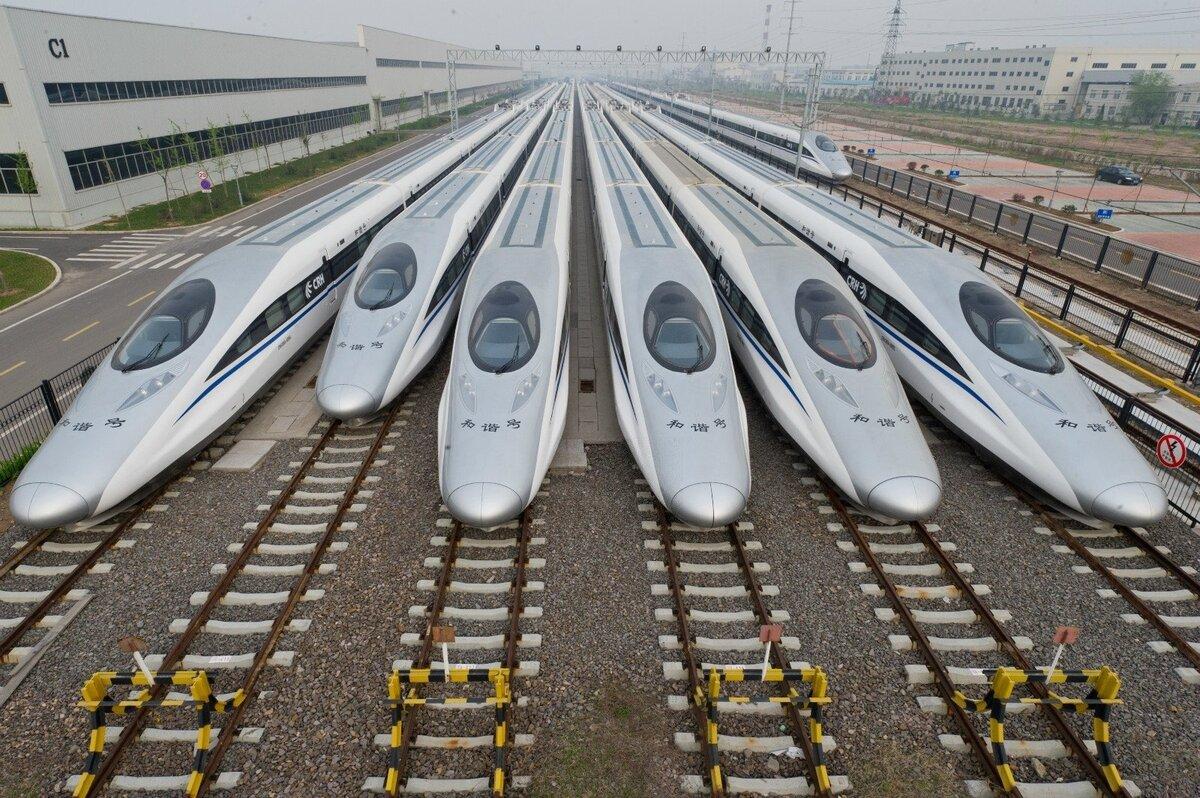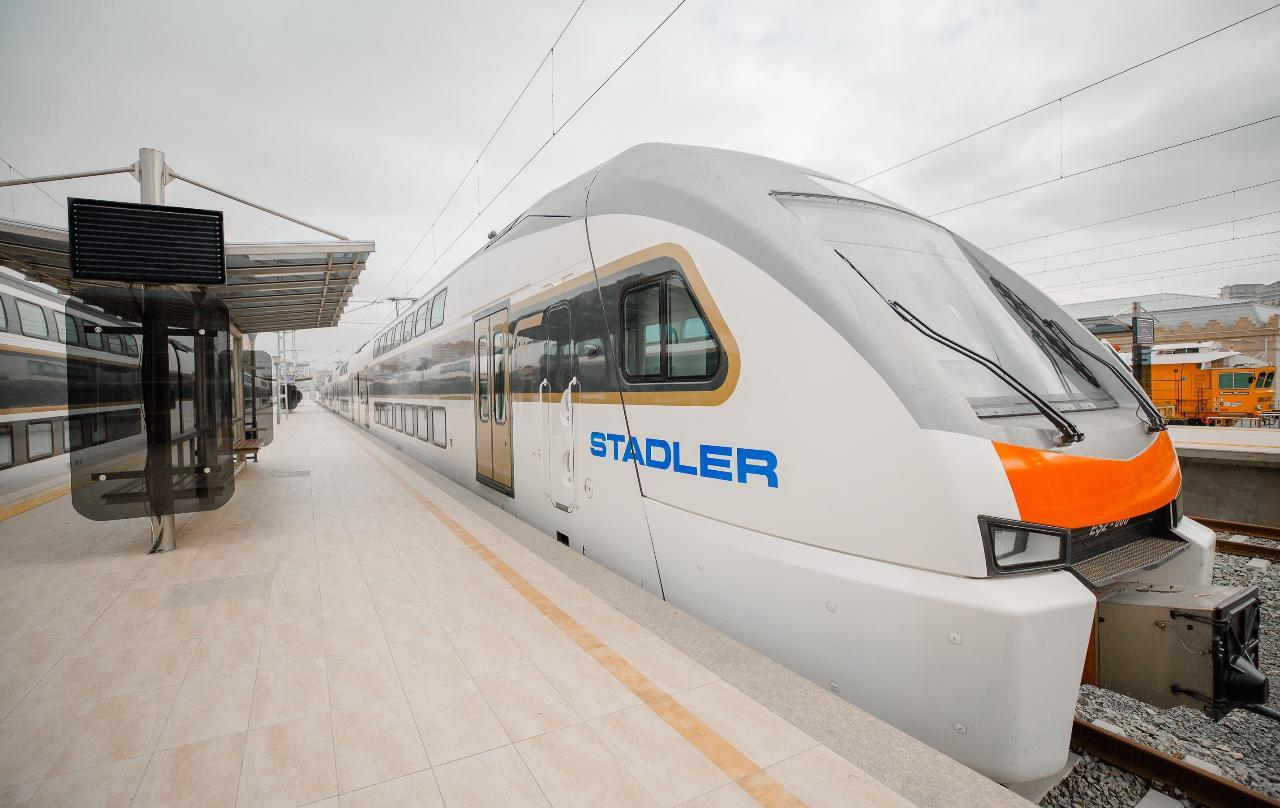FLIRT trains enhance high-speed rail network beyond Baku Azerbaijan's rail revolution
High-speed railway passenger communication has long become a mainstream trend and successfully competes with air transportation in a number of countries of the world. Although specialized high-speed highways have not been created in Azerbaijan yet, in recent years "Azerbaijan Railways" CJSC has been implementing a project of high-speed passenger traffic adapted to the capabilities of local railway lines.
The country's steel highways are being modernized, track and electrical facilities, signaling and optical communication systems have been upgraded, and various types of trains have been purchased from the Swiss company Stadler Rail Group, including four FLIRT trains. Azerbaijan Railways organized a symbolic trip on a new high-speed FLIRT train in the direction of Ujar and Laki stations.
Despite the dominance of air transportation over long distances, high-speed ground rail transportation has been a serious competitor to medium-range passenger aviation over the past half-century. Modern high-speed rail (HSR) provide trains with 250-400 km/h speed on specialized lines, and there is also a category of high-speed trains moving in the range of 120-200 km/h on modernized standard railway tracks. High-speed trains are a serious competitor to other modes of transportation (e.g., bus service) due to their prompt service and high speed, and in some cases, due to the relatively low cost of transportation with a large volume of passenger traffic, they also outperform air carriers in some cases.
For the first time in the world, the regular movement of high-speed trains began in 1964 in Japan under the "Shinkansen" project, and in 1981 similar trains began to run in France. As a result, already at the end of the last century high-speed highways of various types began to appear in a number of other countries of Western Europe, including the islands of UK. As part of the steps to liberalize cross-border rail transport in the European Union starting in 2019, public and private carriers from EU member states have the right to use the entire available high-speed railway infrastructure in Europe.
The creation of a comprehensive high-speed network covering the largest regions and cities of the EU is estimated at €550 billion. In particular, Ferrovie dello Stato Italiane (FS), the national operator of the Italian rail network, is preparing to launch a cross-border high-speed connection in the direction of Amsterdam, Barcelona, Brussels, Paris, Berlin, and in the future the project will cover other major cities of the Old World.

High-speed rail projects have been successfully implemented in the US, the Republic of Korea, similar initiatives are being implemented in Türkiye, but in the 21st century the world leader in the development of a network of specialized high-speed rail lines is China, where by 2020 the length of the high-speed rail network amounted to 38,000 kilometers. Russia picked up this global trend in the former Soviet Union: by the end of 2009, the Sapsan high-speed train was put into operation, running on the common railroad tracks of Russian Railways along with regular freight and passenger trains.
Azerbaijan is also gradually developing a concept for the development of high-speed rail traffic, which is close to the Russian concept in terms of goal-setting. In the post-pandemic period, Azerbaijan Railways specialists are implementing a three-year strategic plan for the gradual expansion of passenger transportation, including new routes covering additional settlements. Last year, the Baku-Gabala route with a length of 309 km was launched, the Baku-Ganja route was extended by another 95 km to Agshtafa, and the launch of the Yevlakh-Balakan railway line is being prepared. Moreover, starting from June 14, 2024, Azerbaijan Railways doubles the number of rides on Baku-Aghstafa-Baku route: taking into account the significant growth in passenger demand, traffic on this route will be carried out daily in the morning and evening. All existing and prospective passenger routes are equipped with high-speed trains of the Swiss company Stadler Rail Group, capable of moving on straight sections of "steel" highways at an average speed of 100 km/hour, and, if necessary, accelerating to higher speeds on modernized sections.
“Today a symbolic ride in the direction of Ujar and Laki stations was organized, from now on about 200,000 people living in Ujar and Aghdash districts will be able to use high-speed passenger trains," said Sanubar Nazarova, head of the Public Relations Department of Azerbaijan Railways CJSC. Four FLIRT trains, delivered to Azerbaijan at the end of last year, are almost ready for full operation". According to the CJSC, the trains have a restaurant car with refreshments and snacks, special seats for people with disabilities, and space for bicycles.
The new trains are equipped with Fluidmesh technology, which provides passengers with fast and uninterrupted internet access, and a multimedia system for viewing various entertainment programs. Designed to carry 236-270 passengers, the FLIRT diesel-electric trains are equipped with an innovative safety system that allows passengers to travel comfortably and safely.
According to the contract signed with Stadler, Azerbaijan Railways has ordered 10 FLIRT single-deck trains, consisting of five cars each, and the remaining six trains will be delivered to the country in the near future. In total, of the ten trains, six are electric and another four are diesel trains and are designed to operate on non-electrified lines. In the future, they may be launched on such routes as Baku-Lankaran-Astara, Baku-Aghdam, Baku-Balakan and Baku-Zangilan, where electrification is completely absent or only a part of tracks is covered by it.

The need to increase high-speed passenger rail service between Baku and the regions of the country is very high: this is evidenced by the statistics of Azerbaijan Railways, according to which suburban and intercity trains carried 3.3 million passengers in January-May this year, which is 21 per cent higher than the corresponding figures of last year. The interest of passengers, especially those living in the regions of the country, is quite understandable. Traditional intercity buses traveling on highways cross passes where there are speed limits, periodically encounter traffic jams or have to overtake a long line of heavy trucks. The absence of such problems on railroads ensures the continuity of traffic, allowing train passengers to significantly reduce travel time. Consequently, high-speed rail routes are particularly important for the development of international tourism, including to future destinations in the Karabakh region.
Focusing on this demand, Azerbaijan Railways plans to gradually create conditions for the expansion of passenger traffic by introducing additional rolling stock in the most demanded directions. In turn, since the beginning of the current year, the railway department has been upgrading platforms at the stations in Bilajari settlement, Khirdalan and Gabala for new Stadler FLIRT diesel trains: additional sections of lower height for new single-deck FLIRT trains are being built on high platforms adapted for stopping double-decker Stadler KISS electric trains.








